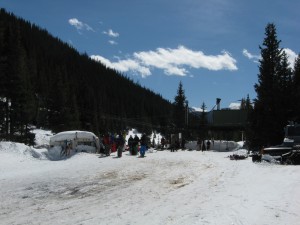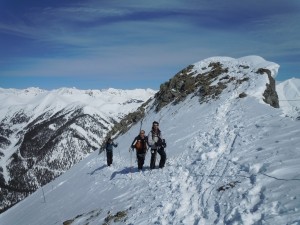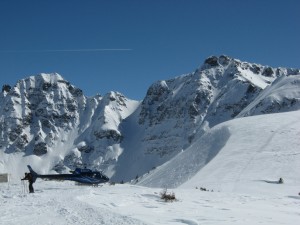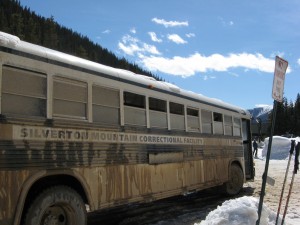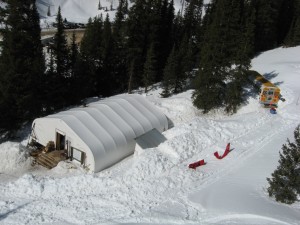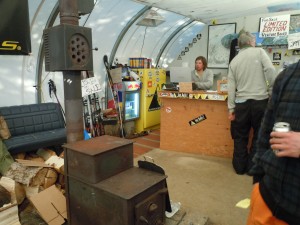Here is an answer to a photography question I had for a while: If vibration reduction (VR) on DSLR lenses results in sharper images a low shutter speeds, why would you ever want to turn it off? I remember once checking the Nikon manual, which recommended turning off VR when using a tripod, but did not offer much explanation. Last week while on a ski trip to Lake Tahoe I experienced the importance of this recommendation. While exploring Donner Pass on an off day, I tried taking this picture of me and my dad. I used the timer and rested the camera on a post for the shot. Here’s the final result:
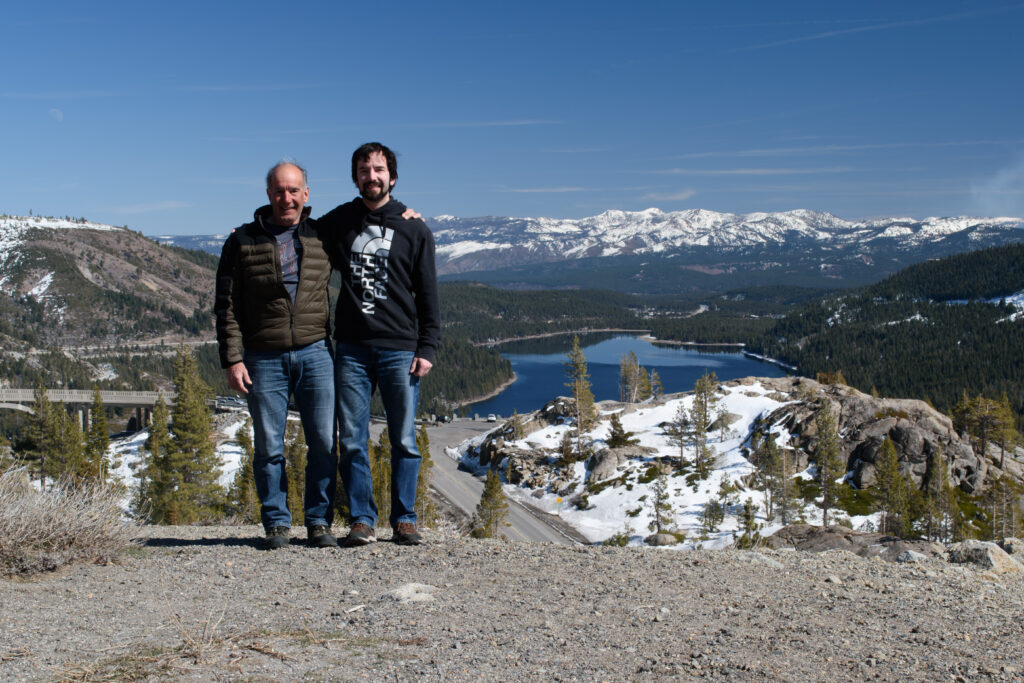
It was a bright day, so I used a small aperture and fast shutter speed. After attempting the shot I noticed that our faces were slightly blurry. Thinking I had somehow missed focus, I tried again with similar results. Then I tried manual focus, same result. Finally I noticed that the background was about equally blurry. Feeling a bit confused, I tried turning of VR. Below is a 1:1 comparison with and without vibration reduction:

I was surprised to find vibration reduction was make the shot worse. Lesson learned – turn off vibration reduction when using a tripod. It sounds like a feature you should never turn off, but apparently it was over-correcting for handheld vibrations which weren’t happening, since the camera was on a stationary object. I was using an older Nikon AF-S DX ED 18-55mm F3.5-5.6G lens, and it’s possible this issue is not as severe on newer VR II lens.


